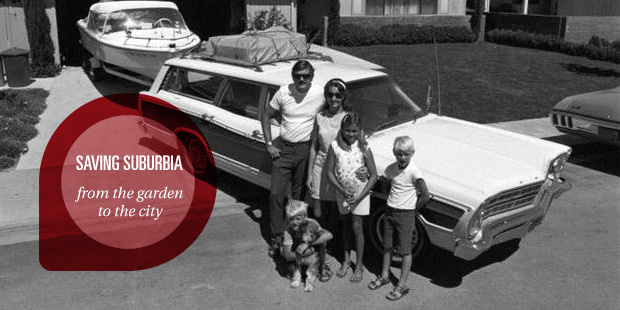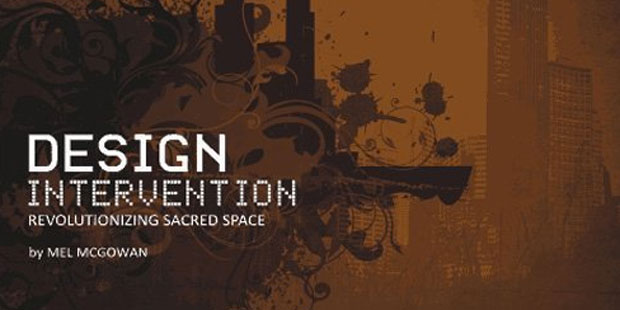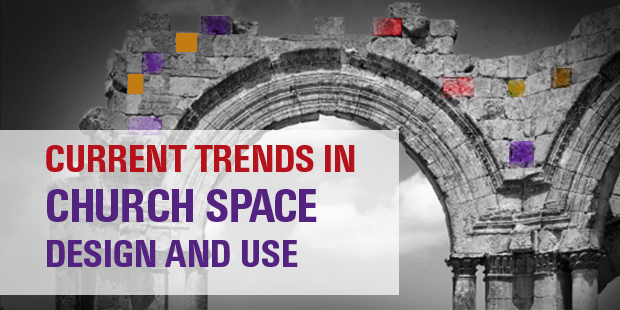from an interview with Tony Morgan and Mel McGowan
You’re going to love this connection. Mel McGowan spent nearly a decade with the Walt Disney Company, he founded Visioneering Studios, a nationwide architectural and community development ministry which was awarded the 2008 Solomon Award for “Best Church Architect”. He has been named one of the top 25 cultural influencers by OC Metro magazine for his role as an “Architectural Evangelist”.
TONY: What’s a current trend that you’re seeing churches across the country begin to embrace?
MEL: I’d say that the biggest shift that I see is a move away from the paradigm of a “campus” (what I call the “Acropolis” model) to that of true community gathering place (the “Agora” model). Increasingly, both established megachurch pastors and next generation leaders are increasingly uncomfortable with the notion of a one-day-a-week, single use, internally oriented megachurch campus in which the parking lot sits empty the rest of the week. Like the ancient Acropolis, the faithful (who have made a prior commitment to “ascend” to the sacred space) are separated from the rest of the community.
The roots of the internally oriented “campus” paradigm come from monasteries and cloisters. To the outsider, this “Christian country club or compound” can seem intimidating at best and completely dissonant with the “Unchristian” perception of Jesus (as described in Gabe Lyon’s book). To the insider/Christian, it becomes to easy for this to facilitate an insular “Holy huddle” lifestyle.
With that said, some mistake the only alternative as an “anti-building” or underground house church approach. I tend to agree with my friend Chris Seay when he told me that real estate development and building can be one of the most incarnational acts that we can join God in. The trend that I see is rediscovering the role of ecclesia (Christ-centered community) as an “anchor tenant” in the heart of our cities and communities. I hesitate to use the “Third Place” term because it has been co-opted into the old campus model to mean repainting the lobby in Starbucks colors and serving coffee on Sunday morning. The real power in the term has roots in the ancient Greek agora (the predecessor to the Roman forum, Medieval piazza, and the American town square), where sacred space was always “in the mix” of where people (believers or not) “did life.”
This is what is keeping our five Visioneering Studios drinking out of God’s fire hydrant across the country is a “both/and” approach for churches that aren’t satisfied with putting up a “No Vacancy” sign at the front door of churches that are experiencing strong growth and evangelism. We believe that what this looks, tastes, and feels like should be different for each community.
- For Austin Stone, it was a “For the City Center” (a non-profit business incubator for secular and faith-based organizations dedicated to providing renewal and redemption in Austin).
- For Mark Batterson in Washington DC, we’re redeveloping a former glassworks and historic rowhouses on Barracks Row (the “Main Street” of Capitol Hill) into a vertical mixed-use block integrating subterranean parking, ground-level retail (a satellite of their award-winning Ebenezer’s Coffeehouse), a children’s attraction, and two performing arts/concert venues (doubling as ministry space).
- Also in DC, near Dulles we’re converting a former Anheuser Busch distribution center (the “Bud building”) into a 70,000+ square foot “N Zone” indoor sportsplex that will also be the first permanent venue for New Life Christian Church.
- At Saddleback’s 100+ acre campus in Southern California, we’re working on a master plan as part of Rick Warren’s “Decade of Destiny” to line parking lots and structures with a pedestrian oriented mixed use “Main Street” which will link the existing campus core to the 100% retail intersection at the church’s perimeter. This will allow the thousands of parking spaces to support the first “downtown” that the newly incorporated city of office parks, strip malls, and residential tracts has ever had.
TONY: How do you see this trend impacting the future of churches?
MEL: I tend to agree with Alan Hirsch that the “both/and” approach is generally the way to go. There was a time when the attractional “megachurch” model seemed like a generally accepted SOP (Standard Operating Procedure). I see a strong parallel with the idea of the church as a participant in authentic “Third Places” and the “Future Travelers” initiative described by Alan and Dave Ferguson in “On the Verge” in which fast-growing attractional megachurches are finding balance by integrating missional-incarnational approaches into their DNA.
In some ways, this is really less an emerging trend than the rediscovery of a “timeless truth” in that throughout the history of our species, sacred space was central to the physical space of community, from the tribal circle to temple courts to the great squares of Europe. It was really only after World War II and the rise of wrong-headed Modernist planning and zoning that cities not only forgot how to facilitate sacred/secular Third Places at their heart, but actually made them illegal by requiring separate land use zones for residential, retail, etc and making churches “beg for the forgiveness to exist” in other land use zones through the onerous Conditional Use Permit process.
I see this trend as relevant for the future of churches at all sizes. For the megachurches with large properties, a simple approach is to consider their parking “moats” as “greyfield redevelopment” potential sites in which synergistic community buildings (sports, commercial, educational, etc) can create “bridges” back to the community). For smaller churches no longer interested in fitting into the “Seeker Sensitive mega-campus mold”, we are finding that establishing themselves as a legitimate community development corporation, a non-profit arts group, or a quality gathering place (eg. Coffeehouse) opens doors to “Main Street”, in-line retail, and obsolete commercial sites opens doors to the city in the same way that the old model announced “we’ve arrived, so give us land use entitlements so that we can not pay property or sales tax, and be a ‘black hole’ in the social life of the city six days a week” closed doors.
If you are intrigued by Mel’s thinking, you may want to pick up one of his books. He is the author of Design Intervention: Revolutionizing Sacred Space (2008) and Saving Suburbia: From the Garden to the City (2009). You can also follow his Travelogue at MelMcGowan.com.

Tags: Austin Stone, Facilities, Mel McGowan, National Community Church, New Life Christian Church, Saddleback Church, Visioneering Studios
|
What is MyVisionRoom? > | Back to Environments >


















